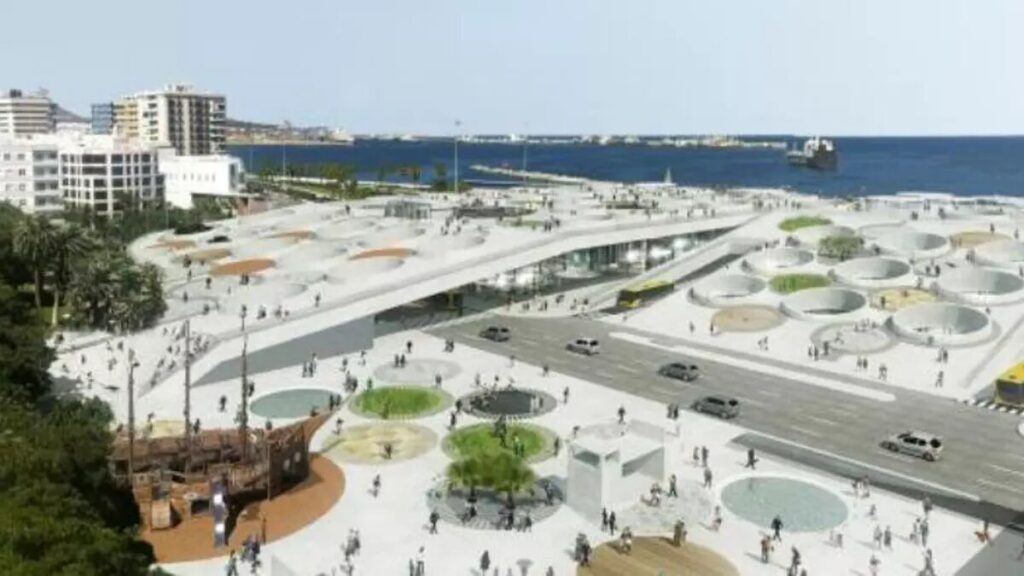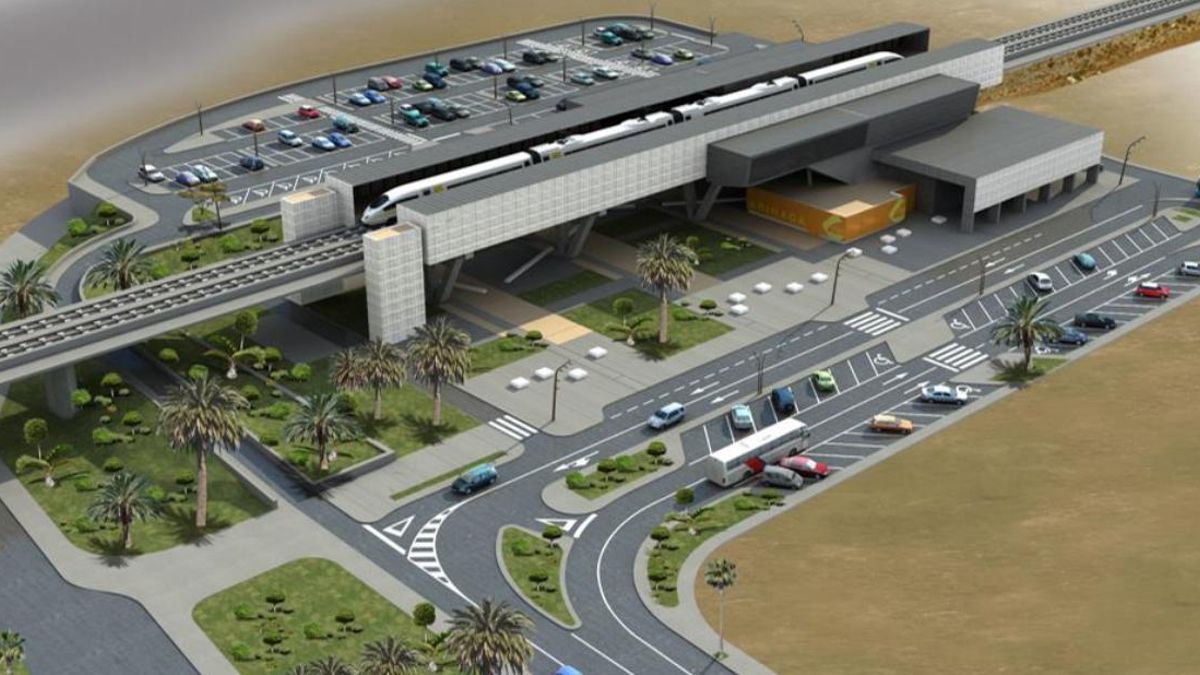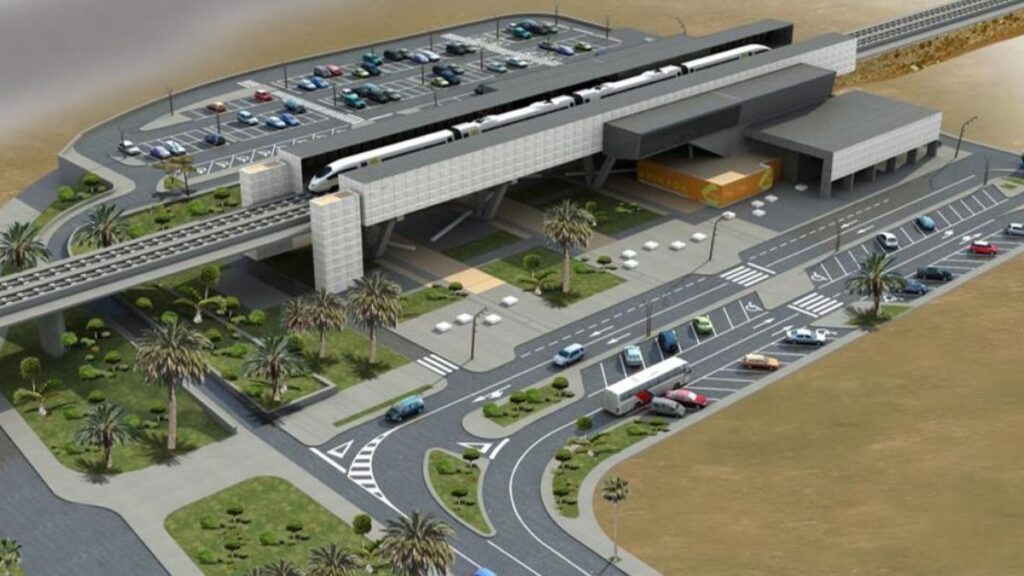The Daily Gridlock
Kilometre-long traffic jams on the GC-1, the TF-5, the TF-1… It’s a familiar scene during the early morning rush, after school hours, or whenever a traffic accident occurs. The situation is succinctly summarised in the explanatory memorandum for the future Canary Islands Sustainable Mobility Law: there is an “excessive load” on the islands’ roads, especially in the two capital cities, Gran Canaria and Tenerife, which are “completely congested in many cases.” This chronic congestion has multiple consequences. Transport is responsible for almost half of the greenhouse gas emissions in the archipelago. Vehicles emit thousands of kilotonnes of CO2 equivalent, endangering the health of the planet. The more inefficient urban mobility becomes, the greater the delays, time loss, and fuel waste. It also affects well-being; the Canary Islands government itself cites research suggesting that the commute to work is the most unpleasant routine activity people endure.
A Railway Solution on the Horizon
This is where trains come in, described as “the only real alternative” to alleviate these issues. This was recently stated by María Fernández, the Director of Transport and Mobility for the Canary Islands government, following a protocol signed between the Spanish state, the regional government, and the island councils of Gran Canaria and Tenerife to push forward the construction of a railway network. This agreement is a preliminary step before signing a multi-year funding agreement.

The plans for Tenerife outline two lines: a Southern line, with a route of almost eighty kilometres and seven stations, and a Northern line, spanning just over 36 kilometres with six stops. In Gran Canaria, the line would cover 57 kilometres from the capital to Maspalomas, feature eleven stations, and be mostly underground. The three projects would cost just over €4 billion, equivalent to more than a third of the Autonomous Community’s annual budget. According to the regional government, building them would completely revolutionise travel. Pablo Rodríguez, the Councillor for Public Works, Housing, and Mobility, added, “The Canary Islands’ sustainable mobility strategy must be strong and transversal, combining railway projects with an efficient public transport network.”
A Divided Expert Opinion
However, several mobility experts consulted show there is no unanimity on this topic. While urban ecologist Salvador Rueda, creator of the “superblock” concept, believes deploying trains is “common sense,” environmentalists strongly oppose their development, and many specialists remain sceptical. For Rueda, it is high time this possibility was discussed “seriously.” He argues the railway should be the “backbone” for the mass movement of people, with stations becoming “new centralities” in the Canary Islands territory, promoting mobility as a “service rather than private vehicle ownership.” He states, “If there is one place where a train makes more sense than anywhere else, it’s an island. Why? Because the settlements, while somewhat dispersed, are very concentrated along the coast. This gives you a critical mass of potential users that is very high.”
The Challenge of Car-Centric Geography
This is one of the most controversial points: whether the train will work given the urban geography of the Canary Islands. The region has a road density of 55.5 kilometres per square kilometre, one of the highest rates in Spain, and a motorisation ratio of 866 cars per 1,000 inhabitants. In simple terms, the territorial planning here is designed almost exclusively to favour the private vehicle, the only transport mode capable of covering the scattered urban development typical of the islands. Julián Sastre, a doctor in Civil Engineering with over forty years of experience, notes, “Trains work better in high-density systems. This isn’t Barcelona, where everyone lives next to the metro, so to speak. Here, people have to be brought to the train. This is a very important point that requires reflection.”
Planning for a Modal Shift
Cristina Arjona, a civil engineer and mobility officer for Greenpeace, adds, “It implies a change of mentality. Citizens need to know that their journey will have two stages, but it will be more efficient and economical than travelling by car, in addition to reducing emissions.” The planning for the Gran Canaria train addresses this. The eleven stations would act as intermodal hubs, equipped with park-and-ride facilities and connections with other transport routes. The island council’s documents even mention the possibility of creating feeder bus lines to bring users from larger areas to the railway. However, they also show the potential elimination of some existing profitable bus routes to avoid duplication that would make the overall public transport system more expensive—a move that could impact the financial stability of the bus network.

Weighing the Benefits and Costs
The train on the round island would reach speeds of up to 160 km/h, complete its journey in 43 minutes, and is projected to have a demand of up to 26 million users in its first year. The council believes around 80% of these passengers would come from private vehicles. While travel times between stations are precisely known, the “generalised cost”—the door-to-door travel time—is more complex. An independent study by the University of Las Palmas de Gran Canaria (ULPGC) used stated preference methodology to estimate transport choices. The researchers’ conclusions were not favourable towards the train; the socio-economic evaluation of the project resulted “negative,” as users primarily value price and in-vehicle time, while access time and congestion risk are less relevant.
The Critical Factor: Ridership
One of the study’s authors, Professor Francisco Javier Campos, admits the trains would provide “time savings” for travellers on the north-south corridors, “gains from new generated trips, and environmental improvements.” However, he emphasises that “the critical factor” determining a positive or negative evaluation is how many travellers will leave their private cars for the train—the modal shift that any mobility policy craves. “This is where much of the distrust towards the project lies,” Campos points out, “because the published studies (by the University versus the Gran Canaria Council) differ notably in the estimated figures, with a particular lack of transparency in the official studies on this topic.” He explains that while a successful shift would solve many mobility problems, “the existing evidence” from transport projects in Europe “is not optimistic” about achieving this, especially when transfers or park-and-ride are required.
Alternative Perspectives and Scepticism
In Tenerife, the authors of the recently approved Sustainable Mobility Plan delved into this dilemma. They recognise the Southern train as “the only future alternative” for more sustainable mobility but note that its high cost and complex construction and operation compromise its short-term viability. The Northern train’s “virtuality is lower,” due to its high price and the existence of alternatives like exclusive bus lanes or tram extensions. The plan’s technicians insist that “all possibilities for managing the metropolitan road network must be exhausted.” Reports suggest that despite high capacity, the trains would attract an “insufficient” number of private vehicle users, generate more noise, and increase land occupation, potentially affecting protected natural areas. Public opinion is also sceptical; 36% of residents surveyed rated the train’s implementation as “not at all appropriate.”
Rethinking the Approach
Urban architect Rodrigo Vargas, who collaborated on the analysis, reflects on the social dimension: “I believe the Canary Islands, and several sociologists support this, is a very individualistic society. People are increasingly living further away, more alone… It’s not just a question of roads. Public transport is very poorly valued here.” He also questions the environmental impact of the construction, warning that fragmenting the territory reduces its ecological capacities and biodiversity. This call for thorough study is a constant among experts. Julián Sastre argues for an incremental approach: “The train is a very good solution, but very expensive. The project must be comprehensive, but we cannot wait 15 years for it. Meanwhile, we need a prior stage based on buses, which are flexible and easier to implement.” Cristina Arjona from Greenpeace advises improving the existing public transport offer first, then trying other measures like bus lanes, before considering large-scale solutions. Ecologist Eugenio Reyes suggests a focus on territorial planning: “Instead of moving people, move the services. A mother who has to take the children to school, then go to the health centre, then sort out paperwork… she spends the whole morning resolving three things because they are far apart. That cannot be.” Finally, Salvador Rueda criticises those who doubt the trains’ viability by focusing only on the economic investment without considering the “hidden costs” of massive private vehicle use: air pollution, premature deaths, and the climate crisis. “How much are the wildfires worth that are generated by the fact that everyone drives around freely? The accounts have to be done comprehensively,” he concludes.


